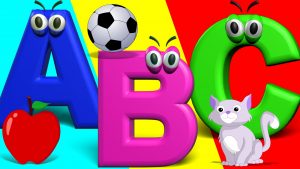The see-atey essaytey on the ematey.
 This is not a new language, this is what comes from young children who learn the names of the letter before the sounds. When it comes to names, think of how an adult would recite the alphabet. Sounds, on the other hand, are just that: the individual sounds heard in a word. Using sounds, children are better able to come to the words that make up the sentence The cat sat on the mat.
This is not a new language, this is what comes from young children who learn the names of the letter before the sounds. When it comes to names, think of how an adult would recite the alphabet. Sounds, on the other hand, are just that: the individual sounds heard in a word. Using sounds, children are better able to come to the words that make up the sentence The cat sat on the mat.
But “the” and “on” were written the same in both examples?
These are sight words, perhaps a topic for another day, which are expected to be recognised without the need for sounding out. Indeed some of these words cannot be sounded out at all (once, for example), which is a common criticism for using letter sounds. As true as this may be, it is our opinion that learning the sounds to start to read, far outweighs this criticism. The alternative is to learn whole words which as described in a previous article leads to a limited number of words being retained at a time.
In addition to letter sounds benefiting early reading, it facilitates early spelling. Consider the confusion of the u and w when trying to spell using letter names.
If we think about it, reading involves a bunch of squiggles on a page – help your emerging reader to make sense of those squiggles using sounds. You can follow this link to hear the correct pronunciation of each sound.
-Delia Tranter

